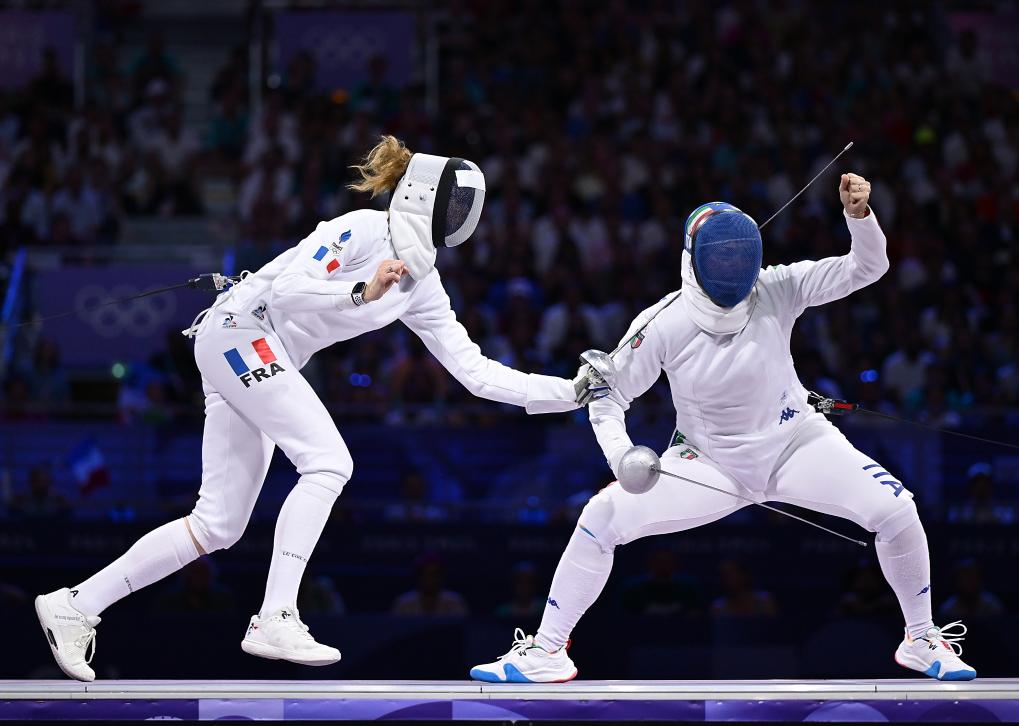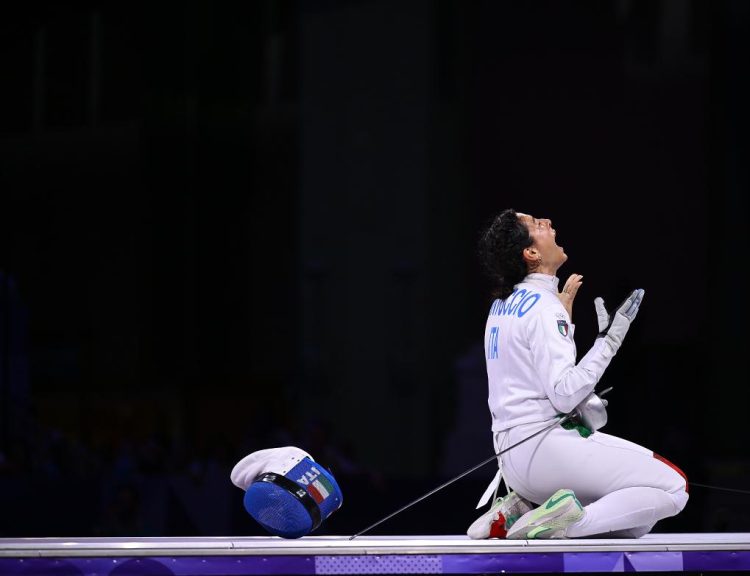Introduction: Italy’s Tradition and Rise in Fencing
Fencing, as a sport with a rich and deep history, has always had an integral relationship with Italy. Not only is Italy one of the birthplaces of modern fencing, but it has also been home to some of the sport’s most legendary figures. Over the years, the Italian fencing team has been a force to reckon with on the global stage, consistently delivering stellar performances at major tournaments such as the Fencing World Cup and the Olympic Games.
However, in recent years, France and Russia have emerged as the dominant forces in the world of fencing, particularly in the team events, making it increasingly difficult for Italy to maintain its historic status as the leader in the sport. As these two countries continue to establish their supremacy, the question arises: Can Italy, with its strong legacy, reclaim its former glory and challenge the dominance of France and Russia on the World Cup stage?
This article will explore Italy’s current performance in the World Cup, evaluate its strengths and weaknesses, and analyze whether the Italian fencing team has the potential to dethrone France and Russia from their positions of dominance.
I. Italy’s Historic Legacy in Fencing
A. A Storied Tradition of Excellence
Italy has long been a powerhouse in fencing, producing some of the sport’s most iconic fencers. From the early 20th century to the present day, Italy has maintained a reputation for producing champions across all three fencing disciplines: foil, epee, and sabre. Historically, Italy has been dominant in international fencing events, with the nation regularly securing top finishes at both the Fencing World Cup and Olympic Games.
Italian fencers have claimed numerous World Championship titles, and the country has produced several Olympic medalists. Some of the most legendary names in the sport have hailed from Italy, such as Nedo Nadi, Dino Ristich, and more recently, Valentina Vezzali—the greatest female fencer of all time. Their skill, style, and tenacity have left an indelible mark on the world of fencing.
B. Recent Performance: Italy’s Consistent Strength
In the past few decades, Italy has maintained its place among the top teams in international fencing. The Italian men’s foil team, in particular, has consistently been a dominant force on the World Cup circuit, with athletes like Daniele Garozzo and Alessio Foconi leading the charge. Italy has also been competitive in women’s events, with fencers like Michele Gallo and Arianna Errigo making significant impacts on the international stage.
Italy’s strong performances in team events have also been noteworthy. They have consistently been contenders for gold in both men’s and women’s events at the World Fencing Championships. This continued success is a testament to the country’s ability to consistently develop world-class talent, ensuring that Italy remains a major player in the global fencing landscape.
II. Challenges Facing Italy: The Rise of France and Russia
A. France: The New Dominant Force
Over the past decade, France has emerged as one of the strongest teams in the world, especially in the team events. The French team has maintained a high level of excellence in all three fencing disciplines and has become a serious rival to Italy’s historic dominance. In particular, French men’s foil and women’s epee have been dominant, with fencers such as Romain Cannone, Manon Brunet, and Ysaora Thibus leading the charge.
French fencers have been particularly strong in team events, often defeating the Italian team in key World Cup finals. The French fencing system is also known for its emphasis on tactical innovation and mental resilience, which has made them formidable opponents. France’s ability to maintain such high levels of consistency and success in team events poses a significant challenge to Italy’s aspirations of reclaiming global fencing supremacy.
B. Russia: Tactical Mastery and Physical Dominance
Russia has also become a major force in the fencing world, particularly in disciplines like women’s foil and men’s sabre. Russian fencers have been known for their physical strength, precision, and tactical intelligence, making them a formidable challenge for Italy in team competitions.
The Russian team’s ability to adapt to different styles of play and their consistency in major tournaments have made them a significant competitor for Italy. In recent World Cup events, Russia has often outperformed Italy, particularly in women’s events, where fencers like Sofya Velikaya and Artem Sychov have established themselves as global stars.
C. Increased Global Competition
In addition to France and Russia, several other countries have raised their standards of fencing in recent years, including Germany, the United States, and South Korea. These nations have introduced new tactics and produced top-level athletes, making it more difficult for Italy to maintain its long-standing dominance.
For example, the United States’ men’s foil team, with athletes like Alexander Massialas, has become a major force, while the South Korean women’s sabre team has delivered strong performances at the World Cup. Italy’s ability to stay ahead of this growing competition will require consistent development and tactical adjustments to its approach.
III. Key Factors for Italy’s Revival in Fencing
A. Youth Development and Rising Talent
Italy’s strength in fencing has always been driven by its ability to develop new talent. The country has a robust youth development system that produces top-tier fencers across all disciplines. Young athletes like Luigi Samele, Martina Criscio, and Tommaso Marini have been making waves in international competitions and represent the future of Italian fencing.
If Italy is to reclaim its position as the top fencing nation, it will need to continue nurturing this young talent and integrate them into the senior team. The focus must be on developing well-rounded athletes who excel in all aspects of the sport—technique, speed, endurance, and mental toughness. As the younger generation gains experience, they will play a critical role in Italy’s efforts to challenge the dominance of France and Russia.
B. Tactical Adaptation and Innovation
To compete with the tactical brilliance of France and the physical prowess of Russia, Italy must continue to evolve its approach. Historically, Italian fencing has been known for its fluidity and artistic precision, but to win on the global stage, Italy must also enhance its tactical innovation.
This could involve shifting focus toward defensive strategies, improving counter-attacks, and maintaining a sharper edge in team coordination. The ability to adjust and innovate tactically during high-pressure matches will be key to Italy’s success in challenging the dominance of France and Russia in World Cup events.
C. Team Chemistry and Cohesion
Fencing, especially in team events, is as much about individual brilliance as it is about team chemistry. For Italy to regain its position as a world leader in fencing, they will need to strengthen their team dynamics and ensure that their athletes work together seamlessly, especially in team sabre and foil events.
In team fencing, the pressure to perform is immense, and the ability to communicate, support one another, and execute tactics as a unit can make all the difference. Italy has historically been successful in team events, and continuing to foster this team-oriented mentality will be essential for reclaiming World Cup titles.
D. Strong Leadership and Coaching
Finally, strong leadership from both coaches and senior athletes will play a pivotal role in Italy’s resurgence. Coaches must bring fresh ideas and inspire their athletes, while seasoned competitors must act as mentors for the younger generation. Veteran fencers like Daniele Garozzo and Alessio Foconi will be instrumental in guiding the team and ensuring that Italy continues to challenge for top honors in major tournaments.

IV. Can Italy Overcome France and Russia in the World Cup?
The answer to this question lies in Italy’s ability to adapt, innovate, and leverage its strengths while addressing its weaknesses. France and Russia have clearly established themselves as formidable adversaries in modern fencing, but Italy has the resources, talent, and history to mount a serious challenge.
To defeat the dominance of these two teams, Italy must maintain its legacy while adapting to the changing dynamics of the sport. By continuing to develop young talent, enhancing team chemistry, and embracing tactical innovation, Italy can undoubtedly challenge for World Cup titles in the near future.
The road to reclaiming the title of fencing world champion is undoubtedly challenging, but Italy’s track record of resilience and excellence in the sport means that they are far from out of the race. The next few years will be critical in determining whether Italy can recapture its place at the top of the fencing world or if France and Russia will continue to dominate the global stage.
Conclusion
The path to regaining the World Cup crown is not an easy one for Italy, but with a rich history, emerging talent, and the right strategic adjustments, the Italian fencing team can certainly rise to the occasion. Whether they will be able to challenge the dominance of France and Russia and claim the title again remains to be seen, but one thing is clear: Italy’s passion and commitment to excellence in fencing make them a team that should never be underestimated. The future of Italian fencing remains bright, and the next chapter in their storied history is yet to be written.


































Discussion about this post